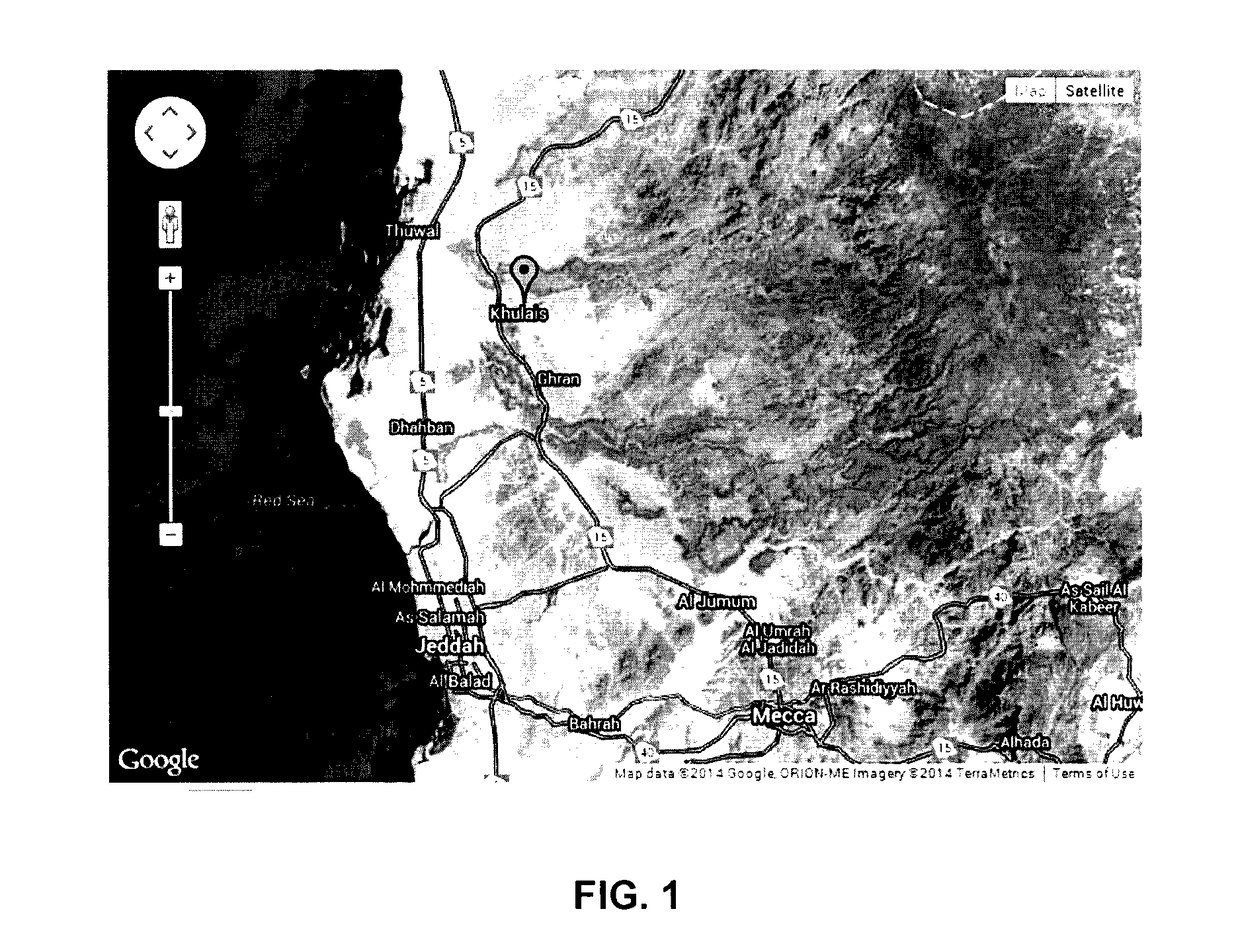Method of producing sodium bentonite
a technology of sodium bentonite and sodium bentonite, which is applied in the field of sodium bentonite preparation, can solve the problems of time-consuming or low efficacy, and produced na-bentonite has not been evaluated for drilling fluid applications. achieve the effect of increasing the water control of the calcium bentonite sample and increasing the average particle size of the ca-bentonite sampl
- Summary
- Abstract
- Description
- Claims
- Application Information
AI Technical Summary
Benefits of technology
Problems solved by technology
Method used
Image
Examples
example 1
Rawbentonite Samples and Reference Samples
[0063]The Khulays area in Saudi Arabia, which is 95 km north of Jeddah as shown in the map image of FIG. 1, has the largest clay deposit in the Kingdom. The Khulays area is 800 m long×600 m wide, with a thickness of 200-300 m, and is estimated to contain 3 million tons of raw bentonite clay. The bentonite is 90% semctite with 10% kaolinite and / or 5-15% quartz (Spencer C. “The Khulays Bentonite Prospect.” Ministry of Petroleum and Mineral Resources, Open-File Report BRGM-of-06-10, pp. 7-8, 1986—incorporated herein by reference in its entirety). Saudi Arabia has a huge bentonite clay deposit resources. This enormous amount of bentonite was enhanced for applications such as drilling fluid and cementing additive. The enhancement was necessary because the bentonite in the Khulays Area in North Jeddah Saudi Arabia is classified as Ca-bentonite, which is not suitable for drilling fluids or cementing applications, because it has low swelling capacit...
example 2
Comparison of Raw Bentonite Purification Techniques
[0071]Raw bentonite exists in nature associated with many mineral impurities, with different composition due to the difference in location and environment. Elements other than montmorillonite should be removed (U.S. Pat. No. 3,865,240—incorporated herein by reference in its entirety). Purification of bentonite is the process of removing all impurities other than montmorillonite, including clay and non-clay impurities. Low water loses of slurry has great advantages in cementing formulation. Cements containing 8 to 12 percent bentonite allow controlling setting properties with good placement and increased performance. Drilling mud grade and cementing additives bentonite have certain specifications attributed to special chemical composition and physical properties. API and OCMA specification are the guidelines for evaluation of bentonite performance. Bentonite quality can be determined by the content of materials other than montmorillo...
example 3
Determination of Clay Content by Hydrometer Analysis
[0075]The clay content of the various purified bentonite samples from Example 2 was estimated by hydrometer analysis. The particle size distribution was measured for the small size particles of clay in addition to clay, sand and silt content as shown in FIG. 5 for sample DS-1 (raw bentonite sample RB-1 dry-sieved through a 200 mesh). When the sample was mixed with water the particles settled at different velocities, depending on their shape, size, weight and viscosity of water. The velocity of soil particles can be expressed by Stokes' law. Since the silt has a higher grain size than clay (clay is ˜4 μm while sand has 0.45-2 mm), the silt will fall to the bottom before the clay does, leaving only silt and clay particles in suspension. Then silt settles and leaves only clay in the suspension. Dry sieved sample DS-1 contains 35% clay, while wet sieved samples are almost 100% clay. The chemical and mineralogy composition of purified b...
PUM
| Property | Measurement | Unit |
|---|---|---|
| Temperature | aaaaa | aaaaa |
| Time | aaaaa | aaaaa |
| Time | aaaaa | aaaaa |
Abstract
Description
Claims
Application Information
 Login to View More
Login to View More - R&D
- Intellectual Property
- Life Sciences
- Materials
- Tech Scout
- Unparalleled Data Quality
- Higher Quality Content
- 60% Fewer Hallucinations
Browse by: Latest US Patents, China's latest patents, Technical Efficacy Thesaurus, Application Domain, Technology Topic, Popular Technical Reports.
© 2025 PatSnap. All rights reserved.Legal|Privacy policy|Modern Slavery Act Transparency Statement|Sitemap|About US| Contact US: help@patsnap.com



